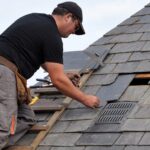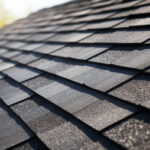Introduction
If you’re a homeowner planning a roofing project, you’ll find yourself asking: how to calculate square footage of a roof accurately? Knowing the size of your roof is a critical part of any roofing project. Whether youre planning to replace your existing roof or just undertake some repairs, getting the measurements correct is essential.

Understanding Roof Types
Before we dive into the specifics of how to calculate square footage of a roof, it’s important to understand the different types of roofs. This knowledge will significantly aid in the calculation process.
Gable Roofs
Gable roofs are perhaps the most common type in residences. They are recognized by their triangular shape and are quite straightforward to measure.
Hip Roofs
Hip roofs have slopes on all sides and may be slightly more complicated to measure than gable roofs.
Flat Roofs
While relatively easy to measure, flat roofs require careful consideration for drainage and other factors that might affect calculations.
Tools You Will Need
Armed with some basic tools, you can easily measure your roof’s area. The essential tools include:
- Tape measure
- Ladder
- Calculator
- Pencil and notepad
Simple Steps in Calculating Square Footage
Now let’s explore the step-by-step guide on how to calculate square footage of a roof. These directions provide a straightforward method for homeowners.
Step 1: Measure the Roof’s Width
Using your tape measure, start by recording the width of your roof. Ensure it’s the widest point of the main section.
Step 2: Measure the Roof’s Length
Next, measure the longest point of the roof. If your roof has different sections, measure each separately.
Step 3: Calculate the Area
For a simple rectangular or square area, multiply the width and length together. This gives you the basic square footage.
Example: For a roof that is 30 feet wide and 40 feet long, the calculation will be:
30 x 40 = 1200 square feet
Complicated Roofs and Pitch Factors
Roofs with multiple facets require more detailed calculations. Additionally, you must consider the pitch or steepness, which can affect the overall size measurement.
Pitch and Its Impact
The pitch of the roof plays a crucial role in expanding the square footage. Roofing contractors frequently use standardized pitch multipliers to account for this.
Establishing Pitch Multiplier
If your roof pitch, for instance, is 6/12 (a common measurement), you would use a multiplier according to roofing guidelines.
Applying the Multiplier
You multiply the flat roof area by the pitch multiplier to get the actual square footage, accounting for the slope.
Example Calculation:
If your roof’s base square footage is 1200 and you have a pitch multiplier of 1.12 (for a 6/12 pitch), your calculation will be:
1200 x 1.12 = 1344 square feet
Why Accurate Measurement Matters
Ensuring the accuracy of your roofs square footage is fundamental for several reasons:
- Cost Management: Avoid overspending on materials.
- Efficiency: Proper material coverage and reduced waste.
Additional Considerations
Consider elements like chimneys and skylights in your calculations. These will affect the materials needed and, consequently, the cost.
Professional Help
While its possible to complete these calculations yourself, hiring a professional to measure your roof can ensure precision and peace of mind. Check out here to help choose the right company for your needs.
Conclusion
Understanding how to calculate square footage of a roof is crucial for any homeowner planning roof construction or renovation. With careful measurement and consideration of the roof pitch, you can gain a realistic estimate of the size.

FAQs
Q: Is calculating the roof size necessary for repairs?
A: Yes, knowing the precise size helps to estimate both materials and costs accurately.
Q: Can I measure the roof from the ground?
A: Yes, but accuracy may be compromised. It’s advisable to get on the roof or use drone technology for a better view.
Q: What if my roof has multiple facets?
A: Measure each facet separately. Then, combine all the individual areas for a total square footage figure.
For more on roofing technologies and choices, visit this external link.
This article contains affiliate links. We may earn a commission at no extra cost to you.








